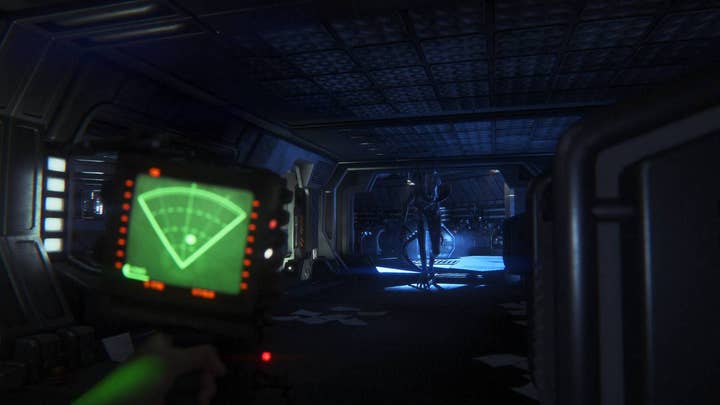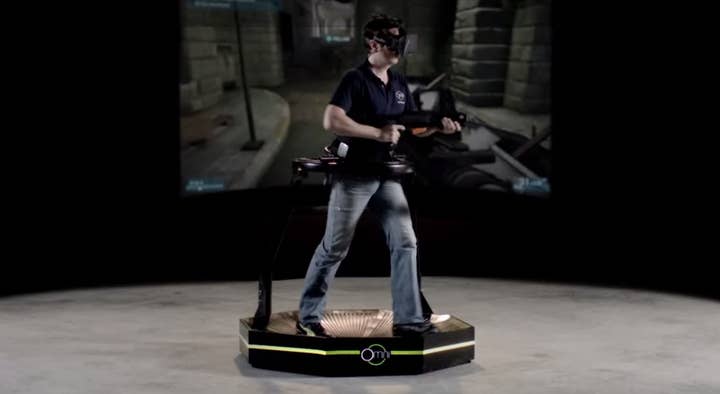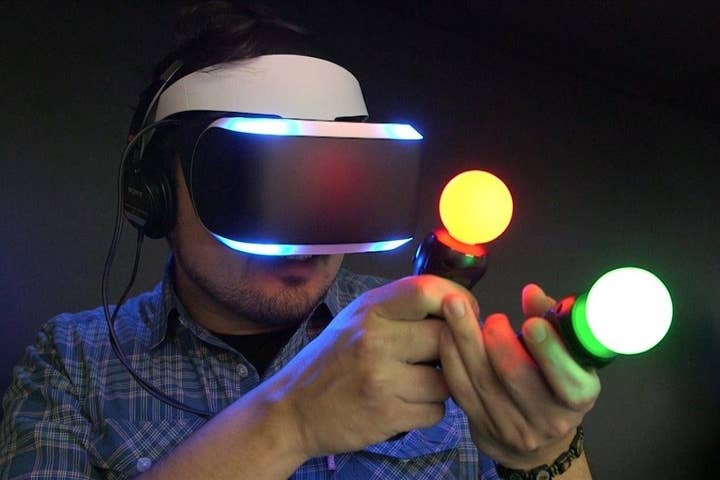Back to Reality: What can we expect from VR games?
"Nobody really knows anything. That's the scary part, and it's also bloody incredible"
With the launch of the Samsung Gear VR this week, what many believe will be a revolution for video games started in earnest. In the two-and-a-half years since the Oculus Rift first came to attention as an enthralling hobbyist project it has generated more excitement - and prompted more career changes - than any gaming technology since the iPhone. Right now, anticipation could scarcely be at a higher pitch.
And yet for all the positive press, virtual reality remains something of a mystery for those not actively working with the technology: a regular feature of industry conferences and consumer events, but generally showcased to limited numbers of people by brief demos or discrete sections of modified games. Like many journalists, I have tried a broad selection of what's available: some of it seductive, some of it jarring, but very little of it resembles a product that could be sold to a consumer.
Indeed, despite all the exposure, exactly what Oculus Rift or Project Morpheus retail games will look like is as indistinct now as the day that John Carmack arrived at E3 2012 with a unique new way to play Doom 3. This is far from ideal, because, as Palmer Luckey has taken great care to point out, the quality of the software will be vital to establishing a viable consumer market for VR gaming. In an attempt to gain a little perspective, I looked back over a year in which VR has dominated the conversation. A year in which I've interviewed the prime movers, reported on a string of lectures and panel discussions, and talked to some of the most excited and engaged developers I've ever encountered.
"When the commercial version comes out somebody is going to scare somebody to death. It is going to happen"
Denny Unger, Cloudhead Games
Amidst all of that noise a few key trends emerged, with one in particular underpinning them all, neatly summarised by nDreams' senior designer Andreas Gschwari: "Nobody really knows anything. That's the scary part, and it's also bloody incredible."
Size matters
At a panel led by Oculus VR at this year's Unity Technologies conference, Cloudhead Games' Denny Unger warned developers about what he saw as a very real danger of virtual reality: player death. With any new technology, he explained, developers will always be tempted to reach for the "low-hanging fruit," which, in the case of VR, are horror games full to the brim with jump scares. "When the commercial version comes out somebody is going to scare somebody to death," he intoned. "It is going to happen. Absolutely."
It seemed a little melodramatic at the time, but Unger's words still resonated with my own VR experiences. When I played Alien: Isolation on a widescreen television and an Oculus Rift DK2 in quick succession, my preference was unquestionably for the former. The addition of VR made The Creative Assembly's game so intense it was overwhelming, to the point where even a 20-minute session struck me as unappealing. Even demos that weren't situated in so overtly horrifying presented a clear challenge to the long play sessions preferred by the core audience.
This is an entirely relevant concern, because core gamers and their expectations will be a key driver of the early market for VR software. In a recent interview, Take-Two CEO Strauss Zelnick echoed this idea when explaining the publisher's reticence to commit resources to VR development. Take-Two's customers, he said, "play our games for a long period of time," and yet public access to the hardware has largely been restricted to 10 or 15 minutes in a given session, and only at events attended by a relatively small number of people.

But the reality is that these snappy play sessions may be closer to actual VR gaming than many assume. For Julie Heyde, an independent developer, the comfort level for a VR play session is 45 minutes or under, and she's using that as a cornerstone for the structure of her game, XTODIE. "That's after discussing with a lot of people how long we should actually make it," she says. "We'll have save points so you can put it down if you have to, but I want it to be a complete experience where you can finish it in that time without taking a break. The only way to be sure that people stay inside the experience until the end is by design."
nDreams' Andreas Gschwari's sees the matter differently. He agrees that VR is better suited to shorter play sessions than those associated with, say, Skyrim, but he maintains that abbreviated play sessions needn't be such a challenge to the tastes of the core audience - not in certain genres, at least.
"We are concerned that you'll play our games for a long period of time. We don't want people getting nauseated"
Strauss Zelnick, Take-Two
"If you look at most AAA shooters, one level is around 15 minutes and a chapter is around 45 minutes - that's the length of a TV episode," Gschwari says. "That's about as long as you've got, in my opinion, of a player's attention. I'm an average gamer, with a lot of other things going on in my life. 45 minutes is a good amount of time to fill. I see VR in a similar range.
"With pure VR games, you should play them as episodic content, just as most gamers do with all other content."
Motion sickness is not just a hardware problem
When Strauss Zelnick questioned whether VR could support the long play sessions preferred by Take-Two's audience, he added a very important qualifier: "We don't want people getting nauseated." Speaking at a conference last month, EA CFO Blake Jorgensen voiced similar concerns. "If you are even slightly motion sick prone, it's very tough," he said. "I've seen people within 30 seconds have to take the goggles off." Even Brendan Iribe, the CEO of Oculus VR, described motion sickness as, "the elephant in the room," and a problem with the potential to harm the growth of the VR market.
It should be noted that Iribe was referring to problems with VR hardware, which a great many attendees of the Oculus Connect conference believe have been solved with Oculus' Crescent Bay prototype. It should also be noted, however, that motion sickness isn't related to the hardware alone. It is also borne of inappropriate design choices, and those will be all but impossible to eradicate.

Indeed, Gschwari believes that this issue should play as significant a role in the development of early VR games as achieving the sense of "presence" that many developers regard as the whole point of the technology. After all, a nauseated customer is unlikely to make a second purchase. "The early games should really focus on player comfort, maybe above trying to reach for full immersion or full presence," he says. "If you can only get to full presence by making the player hurl we should opt for less presence and less hurling."
One of the main offenders in that respect is the player's control over the movement of their avatar, particularly in first-person - the viewpoint of choice for a great many VR developers. This issue can manifest in a variety of different ways, but allowing the player to move in one direction while looking in another is perhaps the most common. This is an issue for the majority of existing game genres, and it's why the most successful VR demos - CCP's EVE Valkyrie, for example - lock the player in a fixed position, or feature a seated avatar.
"We're a little worried about some of the bigger companies putting out product that isn't quite ready"
Brendan Iribe, Oculus VR
Restricted movement will be commonplace
Most VR developers I have encountered are acutely aware of this limitation, and are building experiences that take steps to avoid what Gschwari calls, "mismatches of control." For Heyde's game, that means not being able to move in a direction unless the camera is already pointing that way - a riff on 'tank' controls - and for both of the nDreams games I played that meant only giving me direct control over the camera. The first, Perfect Beach, featured a motionless avatar laid out on a sandy shore. The second, Gunner, took a similar approach to EVE Valkyrie, strapping the avatar into a cockpit and only allowing control over the aiming of the gun.
For Gschwari, this demonstrates an important guideline for VR developers. "If you make it contextually right, the player won't feel it as a sense of loss. If the brain ticks off 'I'm not moving' it forgets about it. It won't question that ever, and it can move on to other stuff. The brain only messes up when it thinks something should be happening, but it isn't, or it's happening in a different direction. That's where you get the conflict in your head, and that's where the problems kick in."

This immediately suggests certain activities as ideal for VR: flight simulators, space combat, racing vehicles, and so on. However, it stands to reason that a mass market for VR can't be established with such a restrictive pallette, so the VR community is hard at work finding movement solutions for games where a static or seated avatar isn't a natural fit. In a first-person shooter, for example, players may have to get used to "on-rails" movement - a common solution used in games for Microsoft's Kinect, and one that left many gamers cold.
"Every first-person shooter you play these days has an on-rails moment," Gschwari reasons. "Because it happens only two or three times players have a harder time accepting it, but if you build the entire game on [it] then players will identify with that.. If what the player is doing at any given point makes sense to them, they'll stop questioning it. 'I'm strapped in? Okay, done deal. This who I am. This is what I do.'"
The gamepad is an impediment to immersion
"It only takes the slightest little thing to remind a person that they're sitting at home with a display on their head"
Jed Ashforth, Sony Computer Entertainment
However, Heyde is concerned that limiting player movement will a negative impact on the quality of the experience. "A lot of VR demos are non-interactive," she says. "They're more like installations or 'experiences' than actual games... There's often nothing to do." In her view, creating a virtual world and then not allowing the player to freely explore and interact with that space neglects one of VR's most appealing traits. Afterall, the notion of Skyrim in VR is immensely seductive, but, on a practical level, the experience wouldn't translate to the current technology.
And that's as more about the need to design towards a standard controller - the one input that most core gamers have readily available - as it is the standard of technology in the VR headset. In fact, Heyde's ideal input device for a VR experience wouldn't be a gamepad, but the sort of motion controllers that became an afterthought in the last console generation - the PlayStation Move, for example, or the Razer Hydra.
"If you use a Hydra or whatnot you can match it up pretty well. The only demo that I've really liked playing, where I've really felt immersed, that used a Hydra," she says. "I was so happy when I saw the Morpheus demo [at GDC], because Sony had people standing up with two Move controllers. That's what I want for my game."
VR is early enough in its development that virtually all 'knowledge' is really just anecdotal, the product result of trial-and-error with pretty much every claim open to question. However, even in that context, the notion that a gamepad is an ill fit for VR is relatively difficult to dispute. As Sony's Jed Ashforth pointed out at GDC Europe this year, creating a sense of immersion - and ideally presence - is greatly helped by limiting abstractions and mismatches, and it's difficult to think of a anything more abstract than the need to hold an oddly-shaped lump of plastic at all times, controlling all movement and interaction by manipulating tiny sticks and buttons.

Sony has integrated Move into many its VR demos precisely because it's a much better fit, and, with no custom controller yet announced for the RIft, one gets the impression that Oculus would prefer to play down the manner in which a standard gamepad can work against the strengths of VR for a little while longer.
"The Morpheus demo where you are fighting the dragon, with the Move controller as a sword, that's the best for me. That's a perfect match, and it really works." That's Eric Krzeslo, the co-founder of SoftKinetic, a Belgian company that has worked with 3D and motion-controlled interfaces since 2007. "But of course," he continues, "for market penetration people need to have the helmet and the Move controllers."
Krzeslo is the provider of the single most effective simulation of a virtual space I have encountered so far. By combining an Oculus headset with SoftKinetic's own DepthSense camera technology, I was able to, not just look around, but reach out, touch and manipulate objects using simulated hands that accurately mirrored the movements of my own. It didn't matter that the 'world' I inhabited was little more than geometric shapes floating in a blank space. The most potent VR experiences will be more about convincing interactions as flashy presentation. To that end, a Move or something similar is the bare minimum.
"You need hand interaction, because that's what you do naturally," he says. "We all agree, including Oculus and Sony, that we need that kind of technology, but they're focused first on getting the display to be perfect."
"That [a sophisticated 3D camera] is really a mandatory component, to get that bodily awareness and give you a natural way to interact with objects in the environment and the UI. You need that connection with your whole body. For the rest, it would depend on what kind of game you want to play. EVE Valkyrie is great with something in your hand. In the demo you're holding a controller, but it would be much better with a Move.
"The ideal situation for us would be to have one of these cameras embedded in [the VR headset]. But the consumer already needs to buy an Oculus or a Morpheus, so if on top of that they also need to buy a 3D camera nobody will make games for it. The installed base would just be too small, and that's always the problem. I think that's the vision for everybody: to have a 3D sensor embedded so you don't have to think about buying anything else.
"We are going to get there, I'm sure. It's just a matter of time."

